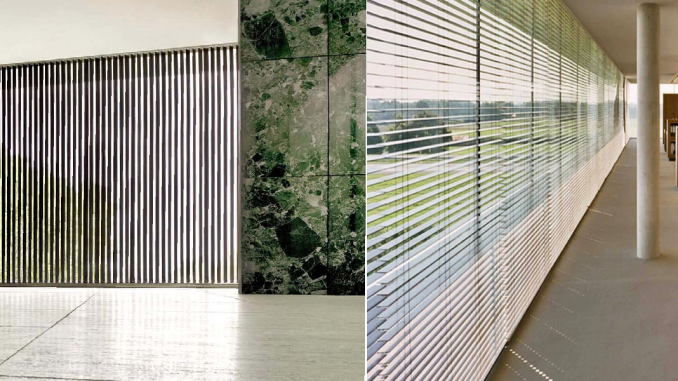
When it comes to window treatments, blinds are a popular choice for their versatility, functionality, and aesthetic appeal. Among the various types of blinds, vertical and horizontal blinds stand out as the most common options. In this blog, we will explore the differences between vertical and horizontal blinds, helping you make an informed decision when choosing the perfect window treatment for your home or office. From their orientation and design to their functionality and style, understanding these distinctions will assist you in finding the ideal blinds that meet your specific needs.
Orientation and Design
The most apparent difference between vertical and horizontal blinds lies in their orientation and design. Horizontal blinds, as the name suggests, feature slats that run horizontally across the window. These slats can be raised or lowered, allowing for customizable light control and privacy. Vertical blinds, on the other hand, have slats that hang vertically from a headrail. They can be adjusted to open from the center or to one side, providing versatility in controlling light and privacy.
Functionality
Both vertical and horizontal blinds offer practical functionality, but each excels in different areas. Horizontal blinds are often preferred for their precise light control. The ability to tilt the slats at various angles enables you to manage the amount of light entering the room effectively. This makes them an excellent choice for bedrooms, living rooms, and spaces where privacy is a priority.
Vertical blinds, on the other hand, are highly functional for sliding glass doors, large windows, and patio doors. Their vertical orientation allows for easy operation, allowing the slats to stack neatly to one side, providing unobstructed access to the door or window. Vertical blinds also work well in spaces with high ceilings, as they can visually elongate the room.
Style and Aesthetic Appeal
When it comes to style, both vertical and horizontal blinds offer a wide range of options to complement various interior design styles. Horizontal blinds, available in materials such as wood, aluminum, or vinyl, provide a classic and timeless look. They add warmth to traditional or rustic settings and sleekness to modern spaces. With a variety of colors and finishes available, you can find horizontal blinds that seamlessly blend with your existing decor.
Vertical blinds, typically crafted from fabric, PVC, or vinyl, offer a more contemporary and chic aesthetic. They are available in an array of colors and patterns, allowing for creative expression and customization. Vertical blinds are often favored in office settings for their clean and professional appearance.
Cleaning and Maintenance
In terms of cleaning and maintenance, horizontal blinds are generally easier to manage. The slats can be wiped clean with a cloth or dusted regularly to remove dirt and dust buildup. Vertical blinds may require more effort, as fabric slats may need to be vacuumed or professionally cleaned.
When choosing between vertical and horizontal blinds, consider the orientation, functionality, style, and maintenance requirements that align with your specific needs and preferences. Horizontal blinds excel in precise light control, while vertical blinds offer practicality for larger windows and sliding doors. Both options provide a variety of styles to suit your interior design. By understanding the differences between vertical and horizontal blinds, you can make an informed decision and enhance the beauty and functionality of your windows.
Whether you are looking for vertical or horizontal blinds, you can check out Plastibec who manufactures and supplies an extensive range of high-quality and sturdy vinyl blinds to suit all types of windows. They use state-of-the-art engineering and technology to manufacture custom window coverings for Canadian, U.S. and international customers. And, in order to keep development costs low, all extrusion dies are made on-site, adhering to rigid standards of quality and performance.

Leave a Reply